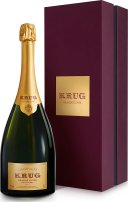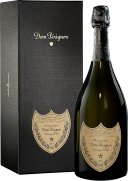Raveneau Chablis Premier Cru 'Montée de Tonnerre'
Keller Abts Erde Riesling
Veuve Clicquot La Grande Dame Brut Champagne
Raveneau Chablis Premier Cru 'Butteaux'
Domaine Jean-Louis Chave L'Hermitage Blanc
Jean-Louis Chave is recognised as one of the greatest wine estates in the world. Chave makes some of the planets most illustrious expressions of Syrah. The 2015 Hermitage is one of the top wines released for the vintage in the Rhone Valley.
Château Leoville-Las-Cases St-Julien
While Chateau Latour might be proximate to the famed Leoville estate, Chateau Leoville-Las-Cases is individually distinguished for its own unique character, and regularly is called the best wine of St-Julien. Classic Las Cases wines show incredible perfume, a result of lower temperature fermentation and an adherence to around three quarters of their barrels being new oak. The 2010 is as always Cabernet Sauvignon dominant, and shows with elegance, finesse and yet a layered complexity that draws the drinker in. Potential for this wine is immense; a life of 30 to 40 years in cellar should be considered.
Vieux-Chateau-Certan
Château La Mission Haut-Brion Pessac-Léognan
Regarded by many as a candidate for wine of the 2009 Bordeaux vintage. A huge accolade indeed for La Mission Haut-Brion considering the quite phenomenal wines being released. The 2009 can boast a colour that is almost impenetrable and a exciting bouquet of blackberry, truffles and spicy earth. The concentration of the palate is something to behold itself. A vinosity that is hard to find elsewhere, the flavours in the mouth follow on from the nose in nice order, yet the sheer power of the wine quite extraordinary. Layers of flavours continue throughout the palate and continue well into its length. Will no doubt be in short supply as all clamour to get a piece of this Bordeaux masterpiece.
Krug Grande Cuvée 169ème Édition
Krug Grande Cuvée is born from the dream of one man, Joseph Krug, to craft the very best Champagne he could offer, every single year, regardless of annual variations in climate. Since 1843, the House of Krug has honoured this vision with each new Édition of Krug Grande Cuvée: the most generous expression of Champagne. Krug Grande Cuvée is re-created every year, beyond the notion of vintage and is a blend of over 120 individual wines from more than 10 different years. The fullness or flavours and aromas achieved by this careful art of blending would be impossible to express with the wines of a single year. This bottle of Krug Grande Cuvée 169th Edition is a blend of 146 wines, from eleven different years, the youngest dating from 2013 and the oldest from 2000. The bottles have rested for approximately seven years in the cellar, thus gaining expression and elegance. . Each glass is the result of more than 20 years of know-how. Krug Grande Cuvée 169ème Édition was created around the 2013 harvest. The season began with an endless winter, followed by a cool and rainy spring. Fortunately, the summer was warm and sunny, although marked by hailstorms which damaged the vines. The wines of the year are as complete as they are expressive, and full of aromas. To create this Edition, the Cellar Master wanted to accentuate the roundness and elegance of the aromas of 2013 with wines from different plots and ten other years. The particular attention paid to the vine and the respect for the unique character of each plot have made it possible to reveal all the expressiveness of this Edition of Krug Grande Cuvée. Reserve wines from Krug's vast library make up 40% of the final blend, lending the essential breadth and roundness to each Edition of Krug Grande Cuvée. This bottle of Krug Grande Cuvée is composed of Pinot Noir (43%), Chardonnay (35%) and Meunier (22%).
Dom Pérignon Brut Vintage
Dom Pérignon is the most famous Champagne in the world, and for good reason. The bouquet sparkles with delicate fresh violets in a setting of white peaches. The soft delicate flavours continue while the senses are tickled by the most delicate of fine bubbles. Though this is such a fine delicate wine, the complexity is astounding, along with its length. Stunning.



















